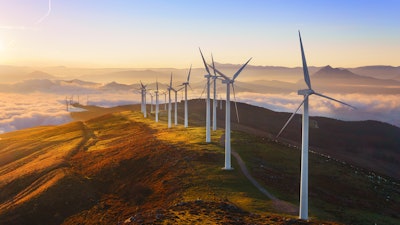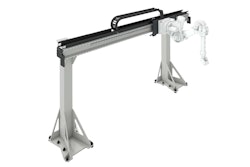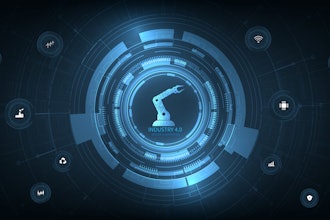
Businesses and world leaders have been striving for ways to go green for more than a decade. As technology continues to advance, the possibilities for eco-friendly movements expand. Now, one of today's most promising technologies, the blockchain, could offer an innovative solution to addressing climate issues.
Blockchains are decentralized digital ledgers most often seen in the financial industry. These technologies are the foundation of cryptocurrencies like Bitcoin, but that's not their only use. In early September, the Global Manufacturing and Industrialization Summit (GMIS) revealed a new blockchain application — green energy.
The Green Chain Initiative, aims to apply blockchain in several areas to foster the most growth. First, it will use blockchains to enable global crowdfunding for green energy projects. Blockchains have become popular among financial institutions for their ability to run fast, secure transactions. The Green Chain Initiative will apply these same benefits to crowdfunding, helping fund renewable energy globally. Ideally, manufacturers could then use these new green technologies to produce more sustainable products.
The project will also create green cryptocurrencies customers can use to purchase these products. Crowdfunding will increase access to renewable energy, which leads to sustainable production, which incentivizes customers to make green purchases. Thanks to the advantages of blockchain technology, every involved party can play a part in sustainability.
Blockchain in Renewable Energy
The Green Chain Initiative isn't the first instance of blockchain usage in green electricity. Earlier this year, a Minneapolis clean energy company announced a blockchain-based trading system for energy credits. This system would eliminate third-party fees and make the process more straightforward.
Blockchains are decentralized, so these transactions don't require any third parties or intermediaries. As a result, these purchases would be free from any processing fees, making green energy credits more appealing to a broader audience. Blockchains are also immutable, so fraud would be less of a concern. The safe, decentralized nature of blockchains could enable peer-to-peer trading for energy credits. These transactions could help local renewable electricity markets grow because they make renewables more accessible.
All of these advantages could help green energy finally become mainstream.
Renewable energy presents a considerable amount of benefits to both businesses and consumers. On top of helping the planet, green technologies like geothermal HVAC systems can lead to a 60 percent reduction in energy spending. As technology improves, these resources should only become more viable, but adoption has yet to accelerate.
In Q1 of 2020, global renewable energy use only increased by 1.5 percent, compared to Q1 of 2019. The adoption of these technologies hasn't kept up with the pace of their development. As climate concerns grow more urgent, the world's energy market may need more innovative solutions.
Projects like the Green Chain Initiative could provide the necessary stimulus to push renewable energy adoption. The world needs new, creative and comprehensive solutions to sustainability, and blockchain-backed projects could be an answer.
One way or another, all industries need to move toward an environmentally sustainable model as new solutions to eco-friendly production are in urgent demand. New technology like blockchains could help more businesses become more sustainable.
Blockchain-based green energy solutions are not the only way to reduce carbon footprints. However, they could make sustainability more accessible than ever before. These developments could be the start of a tech-driven climate revolution.
Emily Folk covers topics in manufacturing and environmental technology at her blog, Conservation Folks.






















